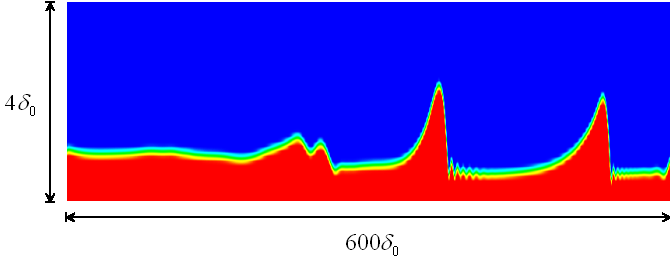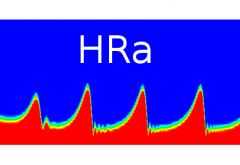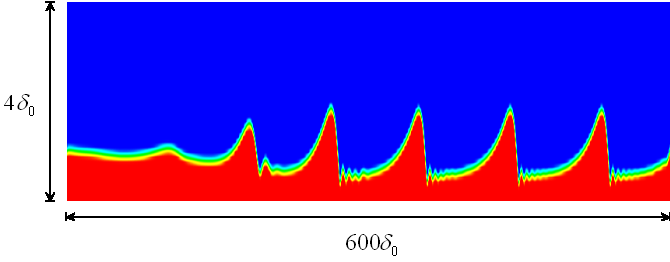
As an example from the broad field of wavy falling films we take a simulation created with OpenFOAM. The picture displays a water falling film of a Reynolds number of 60 being harmonically excited with a frequency of 13 Hz. Gravitation points from the left to the right. The control volume is 600 units long (in the direction of the stream). One unit is the thickness of the corresponding smooth film. The height (perpendicular to the stream) is equal to 4 units being magnified by a factor of 50.
The red colour marks the water, the blue the air. Downstream a certain pattern can be recognized: A large solitary wave and in front of it small capillary waves.

